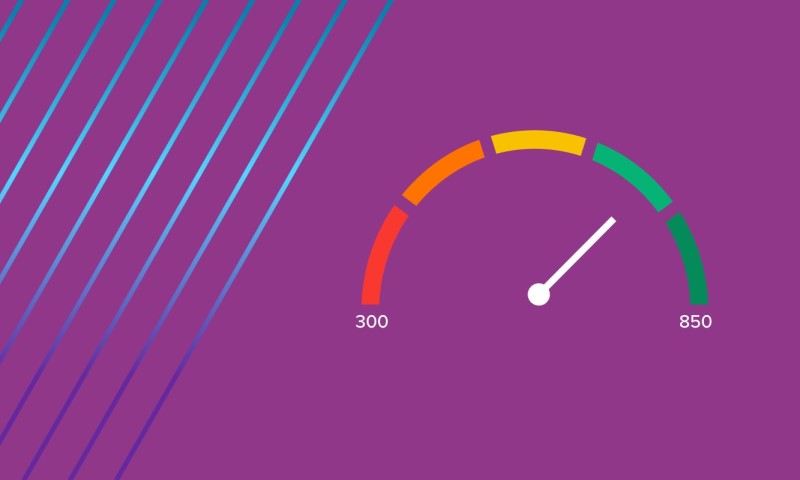The Bottom Line
Small business is important to Central Oregon, and to Mid Oregon. Find tips and resources for business, and information about Mid Oregon’s commercial services and business members.

Ten Things You Can Do To Improve Your Credit Score
Did you know that almost 40% of Americans don’t know their credit score? If that is you, it stands to reason that you also would not know how to improve your credit score.
Go Banking Rates Survey
Those are the findings of a survey commissioned by Go Banking Rates and reported on Yahoo.com. In the article it states “Despite this crucial (credit score) number playing such an outsize role in the interest rate you can expect to pay on a mortgage or personal loan, many Americans don’t actually know their credit score, let alone the type of score they need to meet their goals.” When you apply for credit, your credit scores help lenders determine whether or not you are able to repay the loan based on your past financial performance.
With a higher score, you qualify for better interest rates, higher credit limits, and more types of credit than you would with a lower score. Your score reflects the way you use credit, and there are no tricks or quick fixes to getting a good score. However, you can raise your score over time by demonstrating that you consistently manage your credit responsibly.
Here are 10 things you can do to improve your credit score:
1. Pay your bills on time. If you have a history of paying your bills on time, you’ll have an easier time getting a mortgage loan, car loan, or credit cards. Even if you’ve had serious delinquencies in the past, a recent history (24 months) of on-time payments carries weight in credit decisions.
2. Keep credit card balances low. High outstanding debt can pull your score down.
3. Check your credit report for accuracy. Inaccurate information on your credit report can be cleared up easily. Always contact the original creditor and the credit bureaus whenever you clear up an error so that the inaccurate information won’t reappear later. Getting rid of the error can improve your credit score.
4. Pay down debt. Consolidating your credit card debt or spreading it over multiple cards will not improve your score in the long run. The most effective way to improve your credit is by slowly paying down the amount you owe. Paying down debt will almost always improve your credit score.
5. Use credit cards—but manage them responsibly. In general, having credit cards and installment loans that you pay on time will raise your score. Someone who has no credit cards tends to have a lower score than someone who has already proven that he can manage credit cards responsibly.
6. Don’t open multiple accounts too quickly, especially if you have a short credit history. This can look risky because you are taking on a lot of possible debt. New accounts will also lower the average age of your existing accounts which is something that your credit score also considers.
7. Don’t close an account to remove it from your record. A closed account will still show up on your credit report. In fact, closing accounts can sometimes hurt your score unless you also pay down your debt at the same time.
8. Shop for a loan within a focused period of time. Credit scores distinguish between a search for a single loan and a search for many new credit lines, based in part on the length of time over which recent requests for credit occur.
9. Don’t open new credit card accounts you don’t need. This approach could backfire and actually lower your score.
10. Contact your creditors or see a legitimate credit counselor if you’re having financial difficulties. This won’t improve your score immediately, but the sooner you begin managing your credit well and making timely payments, the sooner your score will get better.
These ideas won’t create a dramatic improvement in your credit score overnight, but over time, they will. Remember, it takes time to develop a strong profile. Once you’ve done it, you’ll find it easier to apply for credit and favorable interest rates.
Additional Resources
Contact a Mid Oregon loan officer to get advice on taking action. We can help affirm you are taking the right steps, and may have some options to help build up your credit score, like credit builder loans.
Read additional articles on improving your credit score.
Mid Oregon offers a resource within our digital banking platform called Credit Savvy. Using Credit Savvy you can see you score, and easily and quickly understand all of the factors that influence your credit score. You’ll get personal recommendations to see if we can lower your monthly payments on your current or future loans and credit cards. with your Credit Score Event Chart, you can visualize the impact to your credit score over time and how key changes can impact it. And, you can simulate your credit score by selecting possible actions, to see if your score will move up or down.

Are you at risk for SMS threats?
smish·ing
noun. the fraudulent practice of sending text messages purporting to be from reputable companies in order to induce individuals to reveal personal information, such as passwords or credit card numbers
How to identify SMS threats
You receive a text message alerting you of a suspicious debit that was attempted on your account. It provides you with instructions how to validate the legitimacy of the transaction. With this spoofing technology it appears the texts are coming directly from your financial institution.
The goal is to get you to provide your account number or online banking credentials to validate your identity. This in itself is problematic. However, fraudsters are now taking this a step further by turning to a hybrid form of smishing. They blast out these text messages as a pretext for immediately calling and scamming anyone who responds via text.
One possible scenario is a member receiving a SMS saying it is from Mid Oregon, inquiring if they authorized a payment from their account. The message asks them to reply “Yes” or “No,” or 1 to decline future fraud alerts. Since this seems like a reasonable and simple request — and they do have a Mid Oregon account — they respond, “No.”
When they reply “No,” someone calls immediately, and the caller ID reflects Mid Oregon. They indicate they are from the fraud department and need to help secure the member’s account. They ask to do this by asking for additional information with the pretense of ensuring they were talking to the account owner and not a potential scammer. Is the call legit or a scam—what would you do?
How to protect yourself against SMS threats
Cyber security experts recommend that account holders who receive a SMS and/or phone call, asking for account information, to follow the fraudulent rule—When In Doubt, Hang up, Look up, and Call Back. Also, don’t assume the number that called you is legit. Look up the number of the financial institution supposedly calling you, and call them back. Also, it is encouraged members save their financial institutions’ number so they can call immediately if they suspect they are victims of fraud.
And, as always, you should not use the same password for all your accounts or use passwords that can be easily guessed. Passwords should be frequently changed and should use multifactor authentication when its available.
Want to know more? Read additional Mid Oregon blog articles about online security and fraud protection.
Content based on an article by Wespay

Start the New Year with a Financial Fitness Plan
With 2021 in the rearview mirror, you may be reflecting on the past year and looking for ways to improve your financial fitness standing. Whether you want to set a savings goal, reduce debt, or fund home improvement projects, Mid Oregon is here to help.
Have you considered refinancing your vehicle at a lower interest rate, or applying for a home equity line of credit (HELOC)? What about consolidating credit card debt with one of our low-interest VISA cards? Have you checked your credit score lately? Our Credit Savvy tool is a free, secure feature located in our Digital Banking platform. Find your credit standing and receive simple, straightforward tips you can use to improve your score.
Building your financial plan does not have to be complicated. Let’s start by finding new ways to make goals you can really achieve and tools that will help get you there faster. Here are some ideas:
Make a savings goal
If you see a tax refund in your future, use part of that money to give yourself a head start. Login to Digital Banking and visit the Savings Goals widget to set a goal.
Create a budget
Write it all down—every dollar you spend! From the daily coffee, to treats for our four-legged friends and monthly subscription costs, it all adds up. Writing down all your expenses, even those that seem insignificant, is a helpful way to track your spending patterns, identify necessary expenses and prioritize the rest. You can jumpstart your budget by applying the 50/20/30 rule. This simple rule consists of allocating 50% of your income toward essential expenses (rent, transportation, utilities), 20% toward personal financial goals (saving or paying off debt), and 30% toward flexible expenses (eating out, groceries, shopping, hobbies or entertainment).
Pass on unnecessary purchases
Get disciplined by identifying your needs vs wants. Do you need the newest smart phone or do you merely want it? Turning down something you want now may be difficult, but the reward will be greater savings later.
Become a fan of automation
- Digital Banking to ease financial tasks, saving you time and increasing your efficiency.
- Automatic overdraft protection. In a few easy steps, you can link your savings account to your checking to have a little added cushion in the event your expenses get a bit tight.
- Automatic loan payments. Your monthly loan payment will automatically be deducted from a linked checking or savings account.
- Setting up auto pay. This is a great way to save you time, hassle and offer peace of mind knowing your bills are paid promptly every month.
- Automate your savings: Direct deposit your paycheck into multiple accounts, including one for each of your savings goals.
Watch it grow
As your savings account balance begins to grow, you’ll feel more motivated to take it even further. We can help you make your money work smarter, not harder, for you.
Whatever your needs, Mid Oregon’s experienced team is a great place to start discussing your money-saving options. The year 2022 is a great time to start taking control of your finances and getting fiscally fit. Stop by a branch or visit us online at Mid Oregon Credit Union and start your Financial Fitness Plan today.
Want to know more? Read additional Mid Oregon blog articles about goals, budgeting, and debt consolidation.
